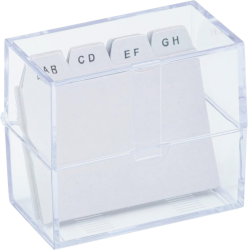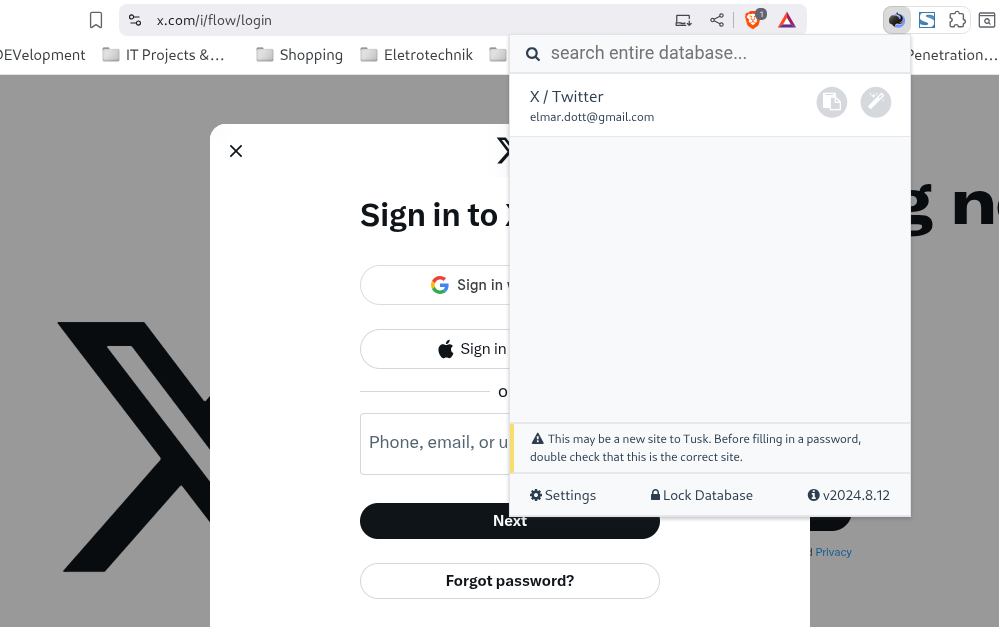Does someone really need to write about passwords again? – Of course not, but I’ll do it anyway. The topic of secure passwords is a perennial topic for a reason. In this constant game of cat and mouse between hackers and users, there’s only one viable solution: staying on top of things. Faster computers and the availability of AI systems are constantly reshuffling the deck. In cryptography, there’s an unwritten rule that simply keeping information secret isn’t sufficient protection. Rather, the algorithm for keeping it secret should be disclosed, and its security should be proven mathematically.
Security researchers are currently observing a trend toward using artificial intelligence to guess supposedly secure passwords. So far, one rule has been established when dealing with passwords: the longer a password, the more difficult it is to guess. We can test this fact with a simple combination lock. A three-digit combination lock has exactly 1,000 possible combinations. Now, the effort required to manually try all the numbers from 000 to 999 is quite manageable and, with a little skill, can be solved in less than 30 minutes. If you change the combination lock from three to five digits, this work multiplies, and finding the solution in less than 30 minutes becomes more a matter of luck, especially if the combination is in the lower number range. Security is further increased if each digit allows not only numbers from 0 to 9, but also letters, both upper and lower case.
This small and simple example shows how the ‘vicious circle’ works. Faster computers allow for trying out possible combinations in a shorter time, so the number of possible combinations must be driven immeasurably with the least possible effort. While in the early 2000s, eight digits with numbers and letters were sufficient, today it should ideally be 22 digits with numbers, upper and lower case, including special characters. Proton lumo’s AI makes the following recommendation:
- Length at least 22 characters
- Mixture: Uppercase/lowercase letters, numbers, special characters, underscore
A practical example of a secure password would be: R3gen!Berg_2025$Flug.
Here we see the first vulnerability. No one can remember such passwords. At work, someone might give you a password policy that you have to follow – oh well, that’s a shame, live with it! But don’t worry, there’s a life hack for everything.
That’s why it’s still common for employees to keep their passwords in close proximity to their PCs. Yes, they still keep them on little slips of paper under the keyboard or as Post-it notes on the edge of the screen. As an IT technician, when I want to log into a coworker’s PC while they’re not at their desk, I still glance over the edge of the screen and then look under the keyboard.
How do I know it’s the password? Sure! I look for a sequence of uppercase and lowercase letters, numbers, and special characters. If there were a Post-it stuck to the edge of my screen with, for example, the inscription “Wed Foot Care 10:45,” I wouldn’t even recognize it as a password at first.
So, as a password, “Wed Foot Care 10:45” would be 16 characters long, with upper and lower case letters, numbers, and special characters. Perfect! And at first, it wouldn’t even be recognizable as a password. By the way: The note should have as little dust or patina as possible.
In everyday working life, there are also such nice peculiarities that you have to change your password monthly, and the new password must not have been used in the last few months. Here, too, employees came up with solutions such as password01, password02, and so on, until all 12 months were completed. So there was an extended verification process, and now it had to contain a certain number of different characters.
But even in our private lives, we shouldn’t take the topic of secure passwords lightly. The services we regularly log in to have become an important part of many people’s lives. Online banking and social media are important points here. The number of online accounts is constantly growing. Of course, it’s clear that you shouldn’t recycle your passwords. So you should use multiple passwords. How best to go about this—how many and how to structure them—is something everyone has to decide for themselves, of course, in a way that suits them personally. But we’re not memory masters, and the less often we need a particular password, the harder it is for us to remember it. Password managers can help.
Password managers

The good old filing cabinet. By the way, battery life: infinite. Even if that might seem unworthy of a computer nerd, it’s still possibly the most effective way to store passwords at home.
With today’s number of passwords, management software is certainly attractive, but there’s a risk that if someone gains control of the software, they could have you – as our American friends colloquially say, “by the balls” – loosely translated into German: in a stranglehold. This rule applies especially to cloud solutions that seem convenient at first glance.
For Linux and Windows, however, there is a solution you can install on your computer to manage the many passwords of your online accounts. This software is called KeePass, is open source, and can also be used legally and free of charge in a commercial setting. This so-called password store stores the passwords encrypted on your hard drive. Of course, it’s quite tedious to copy and paste the login details from the password manager on every website. A small browser plugin called TUSK KeePass can help here. It’s available for all common browsers, including Brave, Firefox, and Opera. Even if other people are looking over your shoulder, your password will never be displayed in plain text. Copying and pasting will also delete it from your clipboard after a few minutes.

It’s a completely different story when you’re on the go and have to work on someone else’s computer. In your personal life, it’s a good idea to adapt passwords to the circumstances, depending on where you use them. Let’s say you want to log into your email account on a PC, but you may not be able to guarantee that you’re not being watched at all times.
At this point, it would certainly be counterproductive to dig out a cheat sheet with a password written down that follows the recommended guidelines: uppercase and lowercase letters, numbers, special characters, including Japanese and Cyrillic, if possible, which you then type character by character with your index finger using the eagle search system.

If you’re not too bad at typing, meaning you can type a bit faster, you should use a password that you can type in 1-1.5 seconds. This will overwhelm a normal observer, especially if you use the Shift key discreetly while typing. You draw attention to your right hand while typing and discreetly use the Shift or Alt keys occasionally with your left hand.
Perhaps, at a cautious assessment, the leaking of your personal Tetris high score list doesn’t constitute a security-relevant loss. Access to online banking is a completely different matter. It’s therefore certainly sensible to use a separate password for financial transactions, a different one for less critical logins, and a simple one for “run-of-the-mill” registrations.
If you have the option to create alias email addresses, this is also very useful, since logging in usually requires not only a password but also an email address. If possible, having a unique email address there, created only for the corresponding site, can not only increase security but also give you the opportunity to become unreachable if you wish. Every now and then, for example, it happens that I receive advertisements, even though I’ve explicitly opted out of advertising. Strangely enough, these are usually the same ‘birds’ who, for example, don’t stick to their payment terms, which they promised before registration. So I simply take the most effective route and delete the alias email address → and that’s it!
Memorability
I’d also like to say a few words about the memorability of passwords. As we’ve seen in the article, it’s a good idea to use a different password for each online account, if possible. This way, we can avoid having our login to Facebook and other social media accounts affected if Sony’s PlayStation Store is hacked again and all customer data is stolen. Of course, there are now multi-factor authentication, authentication, and many other security solutions, but operators don’t always take care of them. Moreover, the motto in hacker circles is: Every problem has a solution.
To create a marketable password that meets all security criteria, we’ll use a simple approach. Our password consists of a very complex static part that, if possible, avoids any personal reference. As a mnemonic, we can use the image of an image, as in the initial example: a combination of an image (“Regen Berg”) and a year, complemented by another word (“Flug”). It’s also very popular to randomly replace letters with similar-looking numbers, such as replacing the E with a 3 or the I with a 1. To avoid limiting the number of possibilities and ensuring that all E’s are now a 3, we won’t do this for all E’s. This results in a static password part that might look like this: R3gen!Berg_2025$Flug. This static part is easy to remember. If we now need a password for our X login, we supplement the static part with a dynamic segment that applies only to our X account. The static part can be easily introduced with a special character like # and then supplemented with the reference to the login. This could look like this: sOCIAL.med1a-X. As mentioned several times, this is an idea that everyone can adapt to their own needs.
In conclusion
At work, you should always be aware that whoever logs into your account is also acting on your behalf. That is, under your identity.
It’s logical that things sometimes run much more smoothly if a colleague can just “check in” on you. The likelihood of this coming back to haunt you is certainly low as long as they handle your password carefully.
Of course, you shouldn’t underestimate the issue of passwords in general, but even if you lose a password: Life on the planet as we know it won’t change significantly. At least not because of that. I promise!




